1932 – 1950
Ever since the Italians had gathered themselves into one united state after an almost endless history as the most divided peninsula in the world, they were eager to show the world that they were able to compete against any possible challenge. Since a nation’s prestige often relied on what kind of beautiful vessels they offered – and this had been the case for almost a hundred years – Italy now felt it was time for them to keep up in the rapid pace race that was held between the supreme nations in Europe concerning their ocean liners.
The supreme nations regarding merchant ships during the 1920s were Britain and Germany. Of course, after the defeat in World War I, Germany was struggling in order to keep up with British lines Cunard and White Star, but their latest project consisting of two very fast 50,000-tonners now offered them a high and distinguished place. These two liners would ultimately be christened Bremen and Europa, and both of them would hold the Blue Riband for some time. Otherwise, the oceans were crowded with lots of British ships such as Majestic, Berengaria, Olympic and Mauretania. All of these ships had been built before the war, and Britain felt they had better too update their almost crumbling fleet. But just after the Germans introduced the Bremen and the Europa, and before Britain’s and France’s best bid came in the mid-1930s, the Italians showed the world what they were able to do.
In September 1932, the brand new Rex set out on her maiden voyage. She was over 51,000 gross tons, and not far from 900 feet in length. Her powerful engines gave her an impressive service speed of approximately 28 knots. This should be enough to take the Blue Riband into possession. However, the Rex faced rotten luck on her maiden voyage, and the trip was a failure due to some mechanical problems. The bad luck continued for almost a year, and it was not until August 1933 that the Rex finally took the westbound Blue Riband-prize from Norddeutscher Lloyd’s Bremen.
Back in the late Twenties, when the Rex was considered, she was not considered alone. She would be part of an ocean liner duo consisting of herself and a slightly smaller sister. The two vessels were constructed very fast, and very simultaneously. While the Rex was finished at the Ansaldo Shipyards in Genoa in September 1932, her sister – the newly named Conte di Savoia – had only a bit more than two months of last attention work ahead of her at the Cantieri Riuniti dell’Adriatico shipyard in Trieste. She had been launched in October 1931, and christened by the Princess of Piedmont. The name honours the famous house of Savoy and means ‘Count of Savoy’. Before the naming the new proud of Italy had reached its decision, several other names had been suggested. One of them was Dux, and was thought to be an excellent companion name to the Rex. Before deciding on Conte di Savoia, however, the suggestion Conte Azzuro was also made.
The Italia Line early stated that the Conte di Savoia would not be able to compete with the Rex in terms of speed. Also – the Conte di Savoia’s size would not match the Rex’s. The interesting thing about the new ship was her indoor fittings. She boasted classic style in a glamorous way, in contrast to the fashion of the period. While new liners such as Île de France, Bremen and White Star’s third Britannic sported the new Art Deco style, the Conte di Savoia proudly exposed her gilded inside – a reminder of true class. The famous Colonna Lounge – all done in marble – amazed passengers with its high ceiling decorated in murals. Along the sides of the giant room were statues standing on pedestals, and the doors were classical fairytale style high ones.
Even though not the size of the Rex, the Conte di Savoia ranked as one of the largest ships in the world with an impressive gross tonnage of over 48,000 and a length of 814 feet. The speed was certainly not anything to be ashamed of either, as the ship could claim to have a service speed of somewhere in the vicinity of 27 knots. During her sea trials in early November 1932, the ship clocked up an amazing speed of 29.5 knots. Later that month, everything was ready for the maiden voyage. She left Genoa for New York on the 30th and, in contrast to the Rex’s maiden voyage, everything seemed to pass on without the slightest hint of any problem. But about 900 miles off the American coast an outlet valve below the waterline jammed. This eventually resulted in the catastrophe of a big hole blown up in the ship’s side. Water rapidly started to fill the handsome liner, and worried officers calculated that the Conte di Savoia, and her passengers, could be unfortunate enough to sink beneath the waves in just a few hours. This would result in a Titanic-scale disaster, and when one brave member of crew realised this he decided to do something about it. Against all odds he made it down to the hole and managed to fill it with cement. Thanks to this man thousands of lives were saved. The passengers had been uninformed of the overhanging danger because the officers wanted to avoid any panic, but when the found out about their saviour he was offered several tokens of appreciation.
Apart from her fabulous interiors, the Conte di Savoia could boast another thing to delight her passengers – she was a very steady ship. At least the Italia Line advertised her as such, but on a westbound crossing the powerful stability engines could not be used because this seriously jeopardised the balance of the ship, and therefore its safety. That is why many passengers may remember the Conte di Savoia as one of those ships ‘tossed around just like an ordinary liner’.
After her rather turbulent maiden voyage, the Conte di Savoia continued to serve the Italia Line without any major mishaps into the 1940s. By then the Second World War had started and Italy had chosen to stand on Hitler’s side. Just like their allied, the Italians thought they would win an easy and quick victory and they announced that both the Rex and the Conte di Savoia would continue their trans-Atlantic crossings in September 1940 ‘when the war would be over’. Until then the ship was sent to the Adriatic coast to be laid up in Malamocco, just adjacent to Venice. As the war roared on, rumours came that the Conte di Savoia would become an aircraft carrier. This would never happen. After having served Italy’s purposes as a transport in 1943, she was returned to Malamocco. In September the same year she was sighted by enemy aircraft. The grand vessel was bombed and without any means of defence, she sank in the shallow waters.
When the war was finally over in 1945, the Conte di Savoia was attended to and on October 16, her damaged hull was raised in order to commence rebuilding. There were considerations to use the ship on the South American route as an emigrant carrier with third class only, but due to shortage of money, material and shipyard facilities, the project was shelved. Sadly, the Conte di Savoia was considered a too expensive and difficult task in 1950, and she was sent to ship breakers in Monfalcone.
Specifications
- 814 feet (248.6 m) long
- 96 feet (29.3 m) wide
- 48,502 gross tons
- Steam turbines powering four propellers
- 27 knot service speed
- Passenger capacity of 2,200 people

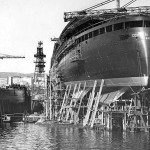
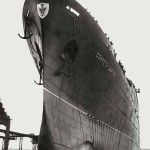
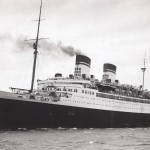
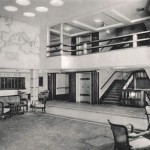
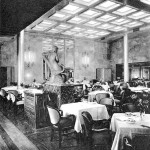
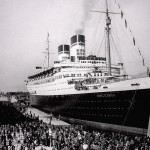
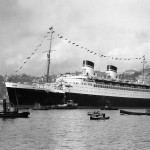
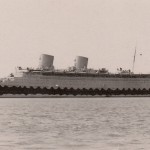
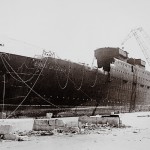
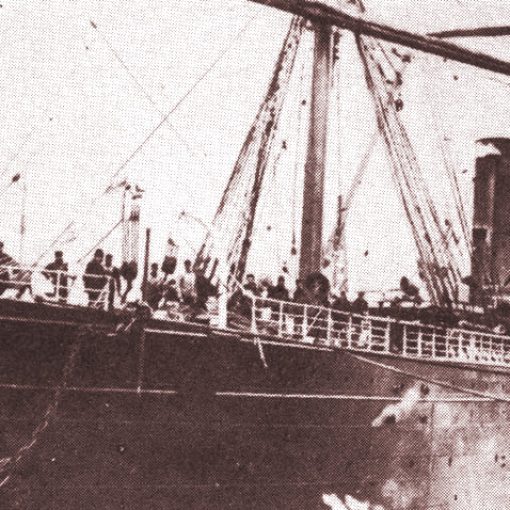


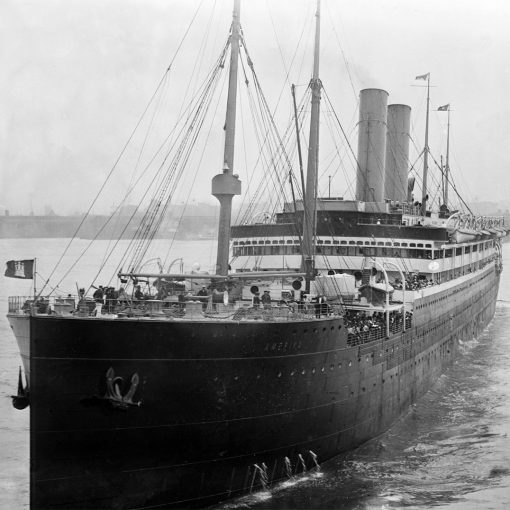
One thought on “Conte di Savoia”
I have a sea shell with the Conte Di Savoia in it . My Grandfather sailed on her from New York to Palermo along the way he bought this souvenir— what is its worth??